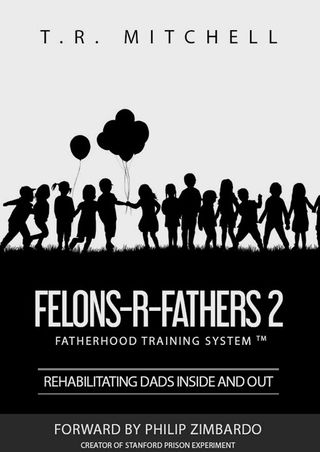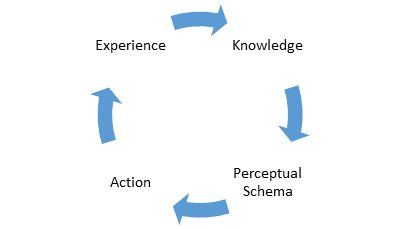Law and Crime
Identity and the Paradigm of Crime
A guest post by Tiant R. Mitchell.
Posted December 8, 2018

Most analyses on the psychology of crime are conducted by those other than the subjects themselves. Here, we hear from Tiant R. Mitchell, who, describing himself as “someone who has spent fifteen years of being in and out of facility after facility, prison after prison,” he discusses his perspectives on the complex connections between experiences, perceptions and behaviors of prisoners. Mr. Mitchell is a Psychology Department Peer Assistant in a Pennsylvania maximum security prison where he teaches Cognitive Behavioral Therapy (CBT) and Attachment Therapy courses. He is also the author of Felons-R-Fathers-2 Fatherhood Training System (FRF2), a book and workbook created for the purpose of guiding men who are in and out of prison how to break the cycle and culture of abuse in which they have been embedded by becoming exceptional fathers. Tiant provides an “inside looking out” experience of a perceptual and political paradigm which has sought to oppress and disable specific sectors of life, both human and nonhuman. In this first installment, Tiant discusses a personal view of how culturally generated and perpetuated thought patterns disable individual prosocial efforts and impulses.
As I sat watching the unfolding of the attack at the Jewish synagogue on Saturday, October 27, 2018, which occurred in my hometown, Pittsburgh, I was, once again, compelled to ask: what is happening? Why is this happening when I believe the natural impulse of humans is to love and care for one another? This quest began in 2014, at the Pennsylvania State Correctional Institution where I am imprisoned. I have watched hundreds of men in the prison yard, and reflected on my own experiences, asking: why does crime happen? This question compelled me to try and figure out what motivated humans to act in the first place. I began by investigating the concept of perceptual schemas.
Perceptual-schemas are blueprints, inferences, and conclusions, made from information derived from experience. Inherent in each schema is an implicit expectation of what is observed or expected to be observed. For example, after seeing a raised hand holding a shoe and reacting by darting away, a child is responding to the logic of the mental construct s/he has formed in relation to the shoe and the person holding the shoe. A raised shoe poses no threat to a child who has never experienced who has never learned to associate this image with danger.

These schemas can become habitual, almost scripted, responses and when transmitted socially can be ingrained as part of group identity. We see social conformity in the outward adornments (the way groups dress similarly) and speech patterns of people (slang and topics of conversation). What is hidden, however, are the thought patterns (i.e., beliefs, mental models and constructs) which drive expression of the former.
Culture is a perceptual schema (view of reality, beliefs, mental models, worldview) shared by many and has expectations of behavior, speech, dress, etc. Each culture carries a perception and with it an expectation of what is seen (perceived, believed, known). Just as readily as one anticipates a "talker" to talk, one anticipates (or expects) a "shooter" to shoot, "robber" to rob and a killer to kill. We anticipate all perceptual-schema to be what it is perceived to be in accordance with experience and expectation. This is where the positive intent and use of culture begins to work against itself, take on a life of its own which may be detrimental to its members.
Collectively inherited constructs evolve as ways to rapidly and efficiently process information to anticipate and avoid dangerous threats or facilitate prosocial transactions. Psychologist Marilyn Brewer writes, “Psychologically, expectations of cooperation and security promote positive attraction toward other in-group members and motivate adherence to in-group norms of appearance and behavior that assures that one will be recognized as a good and legitimate in-group member. “ [1]
But, without “updating” and re-calibrating perceptions with reality, these mental constructs imprison an individual into a particular identity. A person who talks is now a talker. A person who agrees with certain policies is now, variously, a liberal or conservative, Democrat or Republican. Slowly over time, the brain requires less and less information in loosely linked patterns to draw conclusions about things and create identifiers for people and circumstances with crippling effects on our humanity. The identifiers become the identity, all together losing the human in the process.
When identifiers (e.g., labels such as talker, killer, Democrat, Republican) become synonymous with the person, perception has supplanted reality. Individuals are no longer just perceived to be mean, different or dangerous they are by definition mean, different, and dangerous. Therefore, they are expected not only to be who they are, but treated according to what they are. If the talker isn't talking he must be sick or something must be wrong (violation of what is expected). The identifier obliterates the true totality of an individual, becoming rigid boxes with implicit (and sometimes explicit) governing externally commandments which do not map to the reality of the individual.
The extreme rigidity of an identity's commandments aids in, if not produces what was witnessed in Pittsburgh on Saturday. Replacement of reality with an abstract identifier leads to “us/them” dualism. Brewer further asserts that “hostility toward out-groups helps strengthen our sense of belonging” and "what is alien is regarded as somehow inferior, less 'good.’” [1] thereby dividing reality into unreal boxes of order and function based on othering. This "othering" is not exclusively a human to human phenomena. Sadly, until we're able to address the perceptual-schema (identities) we hold of ourselves and others (and the expectations that come with them) stories like those of October 27, 2018 will only continue.
I am not implying that there is not free will. In many circumstances, however, the false reality created by “cultural commandments” override natural reality. The cultural commandments of my neighborhood for example, and those of many American urban ghettos, define reality and determine what is acceptable behavior and what is unacceptable behavior. Violence was acceptable, non-violence wasn't. If one wanted to matter, that is feel, live, be seen, heard, acknowledged, valued, loved and respected, one could not embrace or exhibit an anti-violence disposition. The cultural commandments and identity expectations of a willingness (and even desire for) violence was a requisite of acceptance to, as Brewer noted, " assure that one will be recognized as a good or legitimate in-group member (emphasis added).” The smallest perceived disrespect which triggers aggression and violence is inextricably linked to cultural identity. Every individual is not only expected to be spring-loaded for violence by the other members of his/her culture, and the surrounding society, but he or she holds the very same expectation of themselves in order assure recognition as a good, REAL and legitimate and surviving member of the group.[2]. This is exactly what I experience growing up in the crime-ridden streets of Pittsburgh Pennsylvania and what I see in the experiences of the men in prison.
So then, what is the answer? How do we fix the crisis? Fortunately, the crisis is reversible. To change crime (action) we must focus on the experiences of the people committing the crime. What needs to be addressed is the perceptual-schema (identities) that says crime is the acceptable course of action. To help me elucidate and unpack this complex process, I developed what I call the 4-Step Actuation Cycle: Understanding the impetus of Human Behavior (4-SAC). [3]

The 4SAC model asserts that all human behavior is a logical expression and communication of an individual's perceptual-schema (i.e., mental constructs of reality). The 4-SAC is the cornerstone of not only the FRF2 course, but my philosophy. [3] The 4-SAC represents the neuropsychological cycle of behavior and incorporates the concepts of the behavioral plasticity of behavior and psychological change. When two or more people share similar life events (experiences), they gain similar information (knowledge) and tend to form similar perceptions, beliefs, and views about the world (schema), which then become expected behavior (action), for everyone.
This is the model that I created to describe and explain brain function complexities to fellow prisoners inside a maximum security prison. Because it is so simple and generalizable, the 4-SAC model makes it the ideal tool for teaching men and women of all backgrounds. When we approach behavior from this perspective, we reevaluate the way we approach crime and those who carry it out. If we approach them as criminals, we perpetuate an implicit (if not explicit) expectation of them to act in ways consistent with that identity (i.e., commit crime, act nefariously, disobey the law). In line with psychiatrist Sandra Bloom's trauma-responsive approach, instead of asking what's wrong with you or what did you do, we must first ask and understand the equally important question: what happened to you?
References
[1] Brewer, M. B. 1999. The Psychology of Prejudice: In-group Love or Out-group Hate, pp. 429-444.
[2] Cohen, D., Nisbett, R. E., Bowdle, B. F., & Schwarz, N. 1996. Insult, aggression, and the southern culture of honor: An" experimental ethnography." Journal of personality and social psychology, 70(5), 945.
[3] Mitchell, T.R. in press. Felons-R-Fathers-2 Manual: A Fatherhood Training System.




